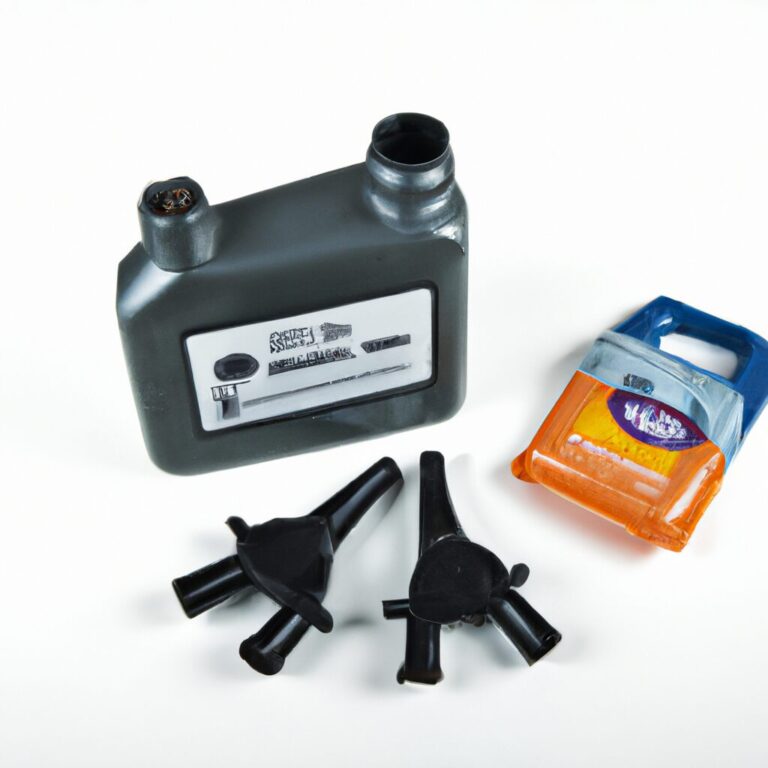How to Tell Negative And Positive on Car Battery
To determine polarity on a car battery, the positive terminal is usually marked with a plus sign. The negative terminal typically features a minus sign.
Car batteries play a crucial role in starting your vehicle and powering various electrical components. Proper maintenance and understanding of battery polarity are essential for ensuring optimal performance and longevity. We will discuss how to identify positive and negative terminals on a car battery and provide tips on how to maintain your battery effectively.
Understanding these basics will help you troubleshoot issues and keep your vehicle running smoothly.
Recognizing Negative And Positive Terminals
Recognizing the negative and positive terminals on a car battery is crucial for safety and maintenance. The negative terminal is marked with a minus sign, while the positive terminal has a plus sign. It’s important to distinguish between the two to avoid accidental short circuits and ensure proper connection of cables.
Physical Identification
To effectively recognize the negative and positive terminals of your car battery, it is important to look for physical identification markers. These markers are designed to help you differentiate between the two terminals, ensuring you connect the battery correctly. Here are some key physical identification signs to look out for: 1. Terminal Shape: The first aspect to consider is the shape of the battery terminal posts. The positive terminal typically has a larger diameter and a dome-shaped top, while the negative terminal has a smaller diameter and a flat top. This distinction can help you identify the terminals at a glance. 2. Terminal Color: Another visual clue is the color of the battery terminals. In most cases, the positive terminal is marked in red or has a red plastic cover, while the negative terminal is marked in black or has a black plastic cover. These colors act as a clear indicator of the respective terminals. 3. Designated Symbols: Car battery manufacturers often imprint symbols or signs directly on the battery casing near the terminals. These symbols can vary, but typically, a plus (+) sign is used to represent the positive terminal, while a minus (-) sign represents the negative terminal. Keep an eye out for these markings to easily identify the terminals.Polarity Markings
In addition to physical identification, polarity markings provide further guidance when recognizing the negative and positive terminals of a car battery. These markings are often found directly on the battery itself and come in various forms. Here are some common polarity markings to consider: 1. Text Labels: Some car batteries have clear labels that directly state “positive” and “negative” near their respective terminals. These text labels make it incredibly easy to determine which terminal is which. 2. Arrows: Another form of polarity marking is the use of arrows on the battery casing. Typically, an arrow pointing towards the positive terminal and another arrow pointing away from the negative terminal can be found. These arrows provide a visual cue for proper orientation. 3. Color Coding: Some battery manufacturers may implement color coding as an additional polarity marking method. They may use red or blue color accents near the positive terminal, while leaving the negative terminal uncolored or in its original state. This color distinction serves as a foolproof way to identify the terminals. Remember, correctly recognizing the negative and positive terminals of your car battery is crucial for safe and effective maintenance. By following these physical identification and polarity marking guidelines, you can confidently connect your battery and avoid any potential mishaps or electrical issues.
Credit: www.pedalsandpumps.com
Tools For Identification
To accurately determine the health of your car battery, you’ll need certain tools for identification. Two indispensable tools are the Multimeter and Battery Tester. These tools provide you with the necessary data to gauge the condition of your car battery.
Multimeter
A Multimeter is an essential tool for checking the voltage of your car battery. By connecting the multimeter to the terminals of the battery, you can easily measure the voltage output. A fully charged battery should read around 12.6 to 12.8 volts. Lower voltages may indicate a weakening battery.
Battery Tester
A Battery Tester is specifically designed to assess the overall health of your car battery. By simply connecting the tester to the battery, you can obtain a detailed report on the battery’s cold cranking amps (CCA) and state of charge. This data helps in determining whether a battery needs replacement.
Safety Precautions
Safety Precautions:
Protective Gear
Wear safety goggles and gloves when handling the car battery.
Avoid contact with skin and eyes to prevent chemical burns.
Proper Handling
Use a battery carrier or protective gloves to lift the battery safely.
- Avoid placing the battery near open flames or sparks.
- Do not tip the battery over to prevent spillage of acid.
Always store the battery in an upright position to avoid leakage.
Testing The Battery Charge
When it comes to car batteries, it is crucial to be able to determine whether they are in a positive or negative state. A low or dead battery can leave you stranded, while a healthy battery ensures a smooth ride. Testing the battery charge is a simple yet effective way to assess its overall condition and performance. In this blog post, we will explore two methods for testing the battery charge: using a multimeter and using a battery load tester.
Using A Multimeter
A multimeter is a versatile tool that can be used to test the voltage, current, and resistance of various electrical components, including car batteries. Here’s how you can use a multimeter to determine the charge of your battery:
- Set your multimeter to the DC voltage setting and ensure it is within the appropriate range for automotive use (usually 0-20V).
- Connect the positive (red) probe of the multimeter to the positive terminal of the battery and the negative (black) probe to the negative terminal.
- Read the voltage displayed on the multimeter. A fully charged battery should read around 12.6-12.8 volts. If the voltage is significantly lower, it may indicate a weak or discharged battery.
Keep in mind that a multimeter only provides a snapshot of the battery’s charge at a given moment. To get a more accurate assessment, it is recommended to perform a load test using a battery load tester.
Using A Battery Load Tester
A battery load tester applies a load to the battery while measuring its voltage drop, allowing for a more comprehensive evaluation of its condition. Here’s how you can use a battery load tester to test your car battery:
- Connect the positive and negative test leads of the load tester to the corresponding battery terminals.
- Start the test and observe the voltage reading on the load tester. A healthy battery should maintain a voltage of at least 9.6-10 volts under load.
- If the voltage drops significantly below this range, it indicates a weak or faulty battery that may need replacement.
Performing regular tests using a multimeter or battery load tester is essential for maintaining the longevity and reliability of your car battery. By accurately assessing the battery charge, you can take necessary actions such as recharging or replacing the battery to ensure optimal performance of your vehicle.
Troubleshooting Common Issues
When it comes to troubleshooting common issues with your car battery, it’s important to be able to distinguish between negative and positive signs to address any potential problems effectively.
Corrosion
One of the common issues that can indicate a problem with your car battery is corrosion. Corrosion on the battery terminals can prevent the proper flow of electricity and lead to starting difficulties. To check for this, visually inspect the battery terminals for white, powdery residue or any signs of rust. If you notice any corrosion, use a mixture of baking soda and water to clean the terminals thoroughly. Be sure to wear gloves and eye protection when handling the battery to avoid any potential harm.
Loose Connections
Loose connections can also contribute to issues with the car battery. Inspect the battery cables to ensure they are securely attached to the terminals. If you notice any loose connections, carefully tighten them using a wrench or pliers to ensure a snug fit. Additionally, check for any fraying or damage to the cables, as this can also impede the proper flow of electricity. It’s crucial to address any loose connections promptly to avoid potential starting or charging problems.

Credit: www.carparts.com

Credit: www.ifixit.com
Frequently Asked Questions For How To Tell Negative And Positive On Car Battery
How Do You Tell Which Side Of A Car Battery Is Positive And Negative?
The positive side of a car battery is marked with a plus sign (+) or the letters “POS” and is usually red. The negative side is marked with a minus sign (-) or the letters “NEG” and is usually black.
Which Terminal Is Positive And Negative On Car Battery?
The positive terminal on a car battery is marked with a plus sign, while the negative terminal is marked with a minus sign.
Which End Of Battery Is Positive?
The positive end of a battery is typically marked with a plus sign (+).
How Do You Tell If A Car Is Positive Or Negative Ground?
A car’s ground is positive or negative based on the location of the battery’s negative terminal. To check, locate the battery and find the cable connected to the negative (-) terminal. If it is attached to the car chassis, the car has a negative ground.
If it connects to the engine block or a ground strap, it is a positive ground.
How Can I Check If My Car Battery Is Negative Or Positive Terminal?
To determine the battery terminals, look for the (+) symbol indicating the positive terminal and the (-) symbol for the negative terminal.
Can I Use A Multimeter To Identify The Positive And Negative Terminals?
Yes, a multimeter can be used to measure voltage and identify the positive and negative terminals of a car battery.
What Happens If I Connect The Battery Terminals Incorrectly?
Incorrectly connecting the battery terminals can cause damage to the vehicle’s electrical system and lead to potential safety hazards.
Conclusion
To conclude, understanding the signs of a negative or positive car battery is essential for proper vehicle maintenance. By being aware of symptoms such as slow engine starts, dim lights, or a complete inability to start, you can address any issues promptly.
Regular battery inspections and maintenance can help avoid unexpected breakdowns and costly repairs. Stay proactive and ensure the longevity of your car battery by following the tips discussed in this blog post.


